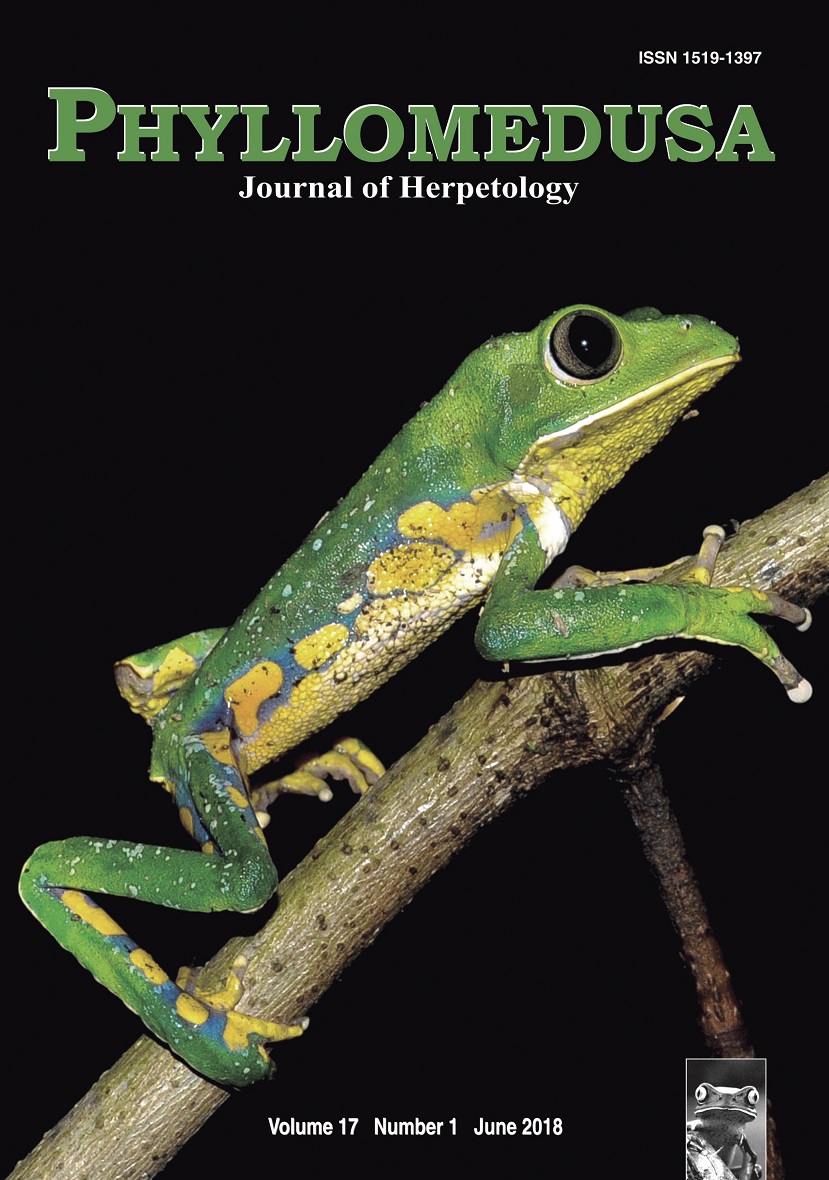Reproductive behavior and development in Spilotes sulphureus (Serpentes: Colubridae) from Ecuador
DOI:
https://doi.org/10.11606/issn.2316-9079.v17i1p113-126Keywords:
behavior, clutch, development, neonate, reproduction, ontogeny.Abstract
Reproductive behavior and development in Spilotes sulphureus (Serpentes: Colubridae) from Ecuador. The Birdsnake Spilotes sulphureus is a large-sized species that occurs from the Amazon region to the Atlantic forest of South America. Despite the wide distribution little is known about its natural history. Here we report, for the frst time, reproductive behavior displayed by this species observed in a pair of Ecuadorian specimens in captivity. A ritualized pre-copulatory behavior followed a colubrine pattern similar to the congeneric species Spilotes pullatus. The repertoire included chin-rubbing, continuous tongue ficking, head raising, body jerking, cloacal gaping, and partial mounting. Oviposition occurred 86–98 days after of the frst copulation. Females lay clutches of 7–14 eggs. Juvenile coloration is remarkably different from adults. Newborns have a dorsum with transverse brown or gray bands, and white or pale gray interspaces; young of 1–2 years have green bands and yellow-green interspaces; adults have dark green bands. Ontogenetic color changes are presumably associated with antipredator strategies, change in size, vulnerability or habitat and microhabitat selection.Downloads
Download data is not yet available.
Downloads
Published
2018-06-26
Issue
Section
Articles
License
All material originally published in Phyllomedusa belongs to Escola Superior de Agricultura Luiz de Queiroz - Universidade de São Paulo. All contents are under a license of Creative Commons BY-NC-ND.How to Cite
Valencia, J. H., & Garzon-Tello, K. (2018). Reproductive behavior and development in Spilotes sulphureus (Serpentes: Colubridae) from Ecuador. Phyllomedusa: Journal of Herpetology, 17(1), 113-126. https://doi.org/10.11606/issn.2316-9079.v17i1p113-126



 Impact Factor (JCR): 0.600
Impact Factor (JCR): 0.600 CiteScore: 1.0
CiteScore: 1.0